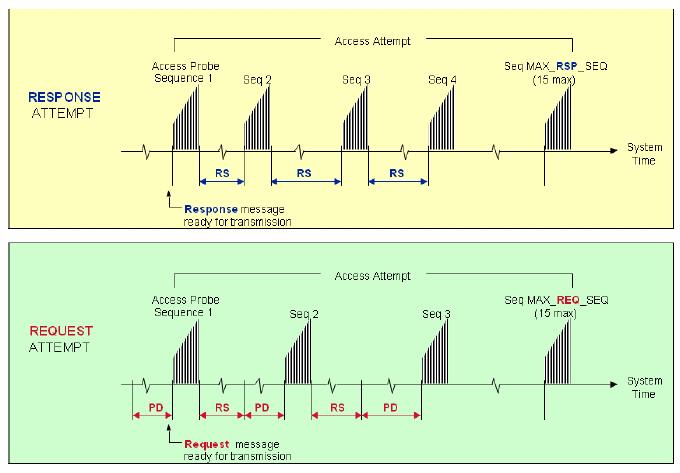CDMA Call failure caused by unsuitable access parameters
Call failure caused by unsuitable access parameters
Typical case:
MS Rx power is normal and pilot Ec/Io is normal;
Observe MS received signal messages in DT test, MS does not receive BTS ACK
message after MS starts origination, then finally the access is failed;
In this period MS Rx power is normal, there is no large fading;
But MS Tx power is not high before access failure:
Analyzing:
According to call procedure principle, when BTS receives MS access request, BTS will
send ACK message to MS. In above cases, MS does not receive BTS ACK message,
this is the main reason for call failure.
MS does not receive ACK message, two possibilities:
1. BTS does not receive MS access request;
2. BTS has sent ACK message, but MS does not receive.
For the second, usually the reason is large fading in forward link and MS can not
receive the message. According to DT test, if there are no large fading phenomena, this
reason can be excluded.
For the first reason, according to DT test, it is very possible. There are also two
possibilities:
There is large fading or strong interference in reverse link; In this case, MS Tx power will tend to maximum and it can be solved;
Access parameters setting are not suitable and access problem power is too low, so
access request can not be received correctly.

The related parameters are like the following:
INIT_PWR
Definition: Initial power, the correction factor used by the mobile stations in the
open-loop power estimation for initial transmission on an access channel expressed as
a binary complement value in units of 1 dB
Range: -16~~15dB, default value is 0dB;
Note: High INIT_PWR value is better for access channel acquisition, but increases
reverse interference; low INIT_PWR will make access channel acquisition become
difficult.
NOM_PWR
Definition: Nominal transmit power offset, BTS use this parameter as correction factor
for open-loop power control, expressed as a binary complement value in units of 1 dB
Range: -8~~7dB, default value is 0dB;
PWR_STEP
Definition: Power increment, the value by which mobile stations increase their transmit
power between successive probes in an access probe sequence, in units of 1 dB.
Range: 0~~7dB
NUM_STEP
Definition: Number of access probes. This parameter is one less than the maximum
number of access probes that mobile stations are to transmit in a single access probe
sequence.
Range: 1~~15dB, default value is 6
Note: high NUM_STEP value can increase access probability, but also can increase
access time; low NUM_STEP value will decrease access probability.
MAX_REQ_SEQ
Definition: The maximum number of access probe sequences for an access channel
request. The value must be greater than 0.
Range: 1~~15, default value is 2
Note: high MAX_REQ_SEQ value can increase access probability, but also can delay
access time; low MAX_REQ_SE value will decrease access probability, but decrease
access time.
MAX_RSP_SEQ
Definition: The maximum number of access probe sequences for an access channel
response. The value must be greater than 0.
Range: 1~~15, default value is 2
Note: high MAX_ RSP _SEQ value can increase access probability, but also can delay
access time; low MAX_ RSP _SEQ value will decrease access probability, but decrease
access time.
Note:
To confirm if BTS receives access request or sends ACK message, the best way is to
start signal tracing for this MS.
Optimization method:
Check background parameter setting and adjust access parameters.
Back to CDMA Menu